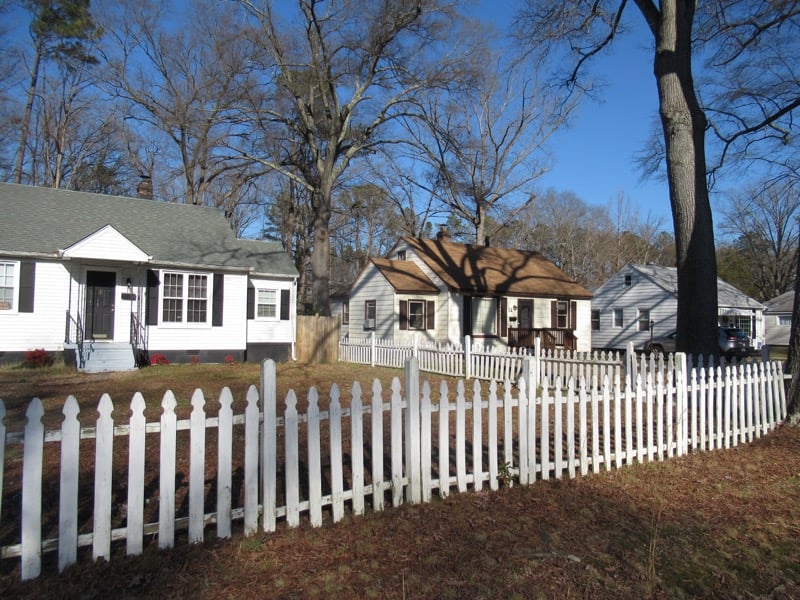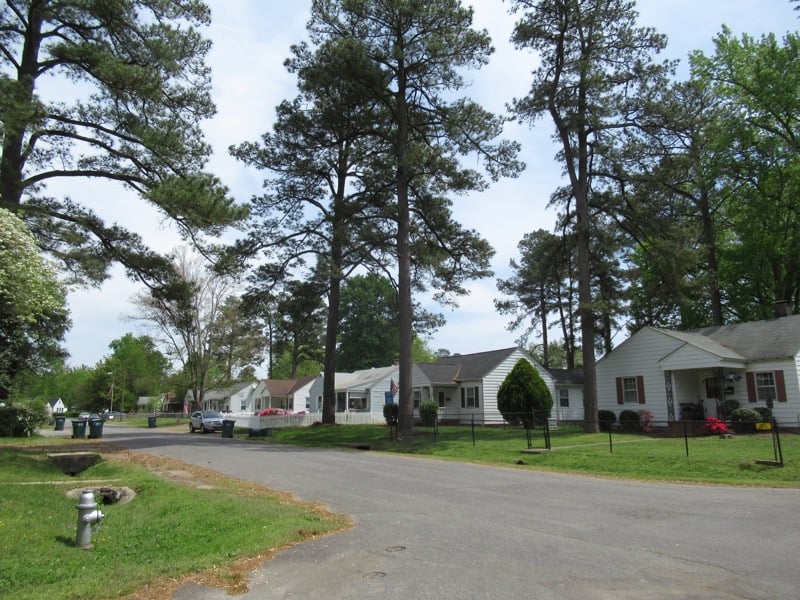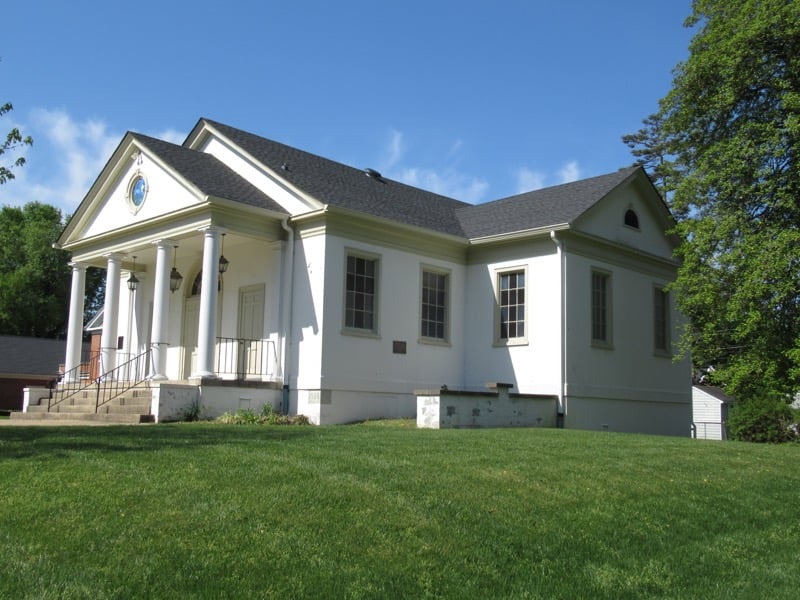Sandston Historic District
What is now the Sandston Historic District began in 1918 when the E. I. DuPont De Nemours Company chose this formerly rural area with a rail connection to Richmond as the site for Seven Pines Loading Plant #3, named for the nearby Seven Pines Civil War battlefield. The plant was one of the company’s three munitions manufacturing facilities in Virginia, along with Hopewell (near Petersburg) and Penniman (north of Williamsburg). All three included employee housing hastily built as kits from materials supplied by the Aladdin Company of Bay City, Michigan, or from actual Aladdin kits. At Seven Pines, the houses consisted of four models of six-room bungalows designed by the subsidiary DuPont Engineering Company and built by the United States Housing Corporation, an entity organized under the Department of Labor as a special wartime measure.
After the war ended on November 11, 1918, production ended abruptly and efforts to dispose of the plant buildings and the houses began immediately. Purchase of the worker village by the Richmond-Fairfield Railway Company (RFRC) in 1921 brought a new phase of development. Oliver J. Sands, a banker and the head of the railway company, envisioned the potential of the former worker village as the nucleus of a suburb of affordable housing for workers who could commute to Richmond on the rail line. Originally known as Fairfield, in 1923 the community changed its name to honor Sands. During each following decade, the community grew with new construction campaigns, notably those in the 1940s, until the original platted area saw its complete buildout in the early 1960s. The district maintains its integrity as an early 20th-century industrial workers’ village and as a post-World War I through post-World War II suburban development. The district includes one of the former munitions plant buildings, single-family dwellings, and commercial, civic, and religious uses.
Hanbury Preservation Consulting prepared the nomination in collaboration with the William and Mary Center for Archaeological Research. It was listed in December 2021. The nomination can be found here.






